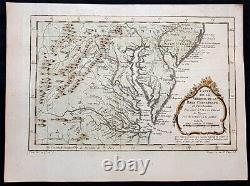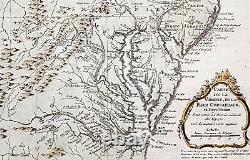
- Homepage
- Brand
- Adidas (514)
- Barnegat Bay Decoy (15)
- Caikag (36)
- Ccm (123)
- Fanatics (71)
- Fanatics Authentic (25)
- Fanatics Branded (38)
- Forever Collectibles (14)
- Green Bay Packers (14)
- Hampton Bay (25)
- Logo Athletic (13)
- Majestic (119)
- Mdf (21)
- Mitchell & Ness (328)
- Mitchell And Ness (16)
- Nike (1598)
- Reebok (421)
- Russell Athletic (35)
- Starter (24)
- Wilson (31)
- ... (1600)
- Gender
- Player
- Aaron Rodgers (367)
- Bart Starr (45)
- Brett Favre (186)
- Clay Matthews (31)
- Devin White (45)
- John Lynch (34)
- Jordan Love (28)
- Klay Thompson (84)
- Martin St. Louis (42)
- Mike Alstott (42)
- Mike Evans (52)
- Nikita Kucherov (82)
- Ray Nitschke (34)
- Reggie White (63)
- Rob Gronkowski (58)
- Stephen Curry (48)
- Steven Stamkos (127)
- Tom Brady (539)
- Victor Hedman (34)
- Vincent Lecavalier (74)
- ... (3066)
- Product
- Authentic Jersey (5)
- Ball (2)
- Baseball Jersey (2)
- Bobblehead (18)
- Display Case (18)
- Football Jersey (7)
- Helmet (4)
- Hoodie (3)
- Jersey (3006)
- Jersey Shirt (2)
- Jerseys (425)
- Lot (3)
- Nfl Football Jersey (7)
- Nfl Jersey (3)
- Puck (2)
- Shirt (5)
- Sign (6)
- Single (19)
- Sweatshirt (2)
- Vintage Nos Jersey (15)
- ... (1527)
- Sport
- Team
- Chicago Bears (5)
- Green Bay Packers (1119)
- Los Angeles Lakers (3)
- New England Patriots (12)
- New York Giants (42)
- New York Jets (4)
- New York Mets (3)
- New York Rangers (3)
- New York Yankees (4)
- North Bay Battalion (6)
- Philadelphia Flyers (5)
- Pittsburgh Pirates (9)
- San Francisco Giants (4)
- Syracuse Crunch (10)
- Tampa Bay Buccaneers (1108)
- Tampa Bay Devil Rays (62)
- Tampa Bay Lightning (1119)
- Tampa Bay Mutiny (10)
- Tampa Bay Rays (189)
- Tampa Bay Tritons (2)
- ... (1362)
1756 J N Bellin Antique Map Virginia, Chesapeake Bay, Maryland & parts NJ & PA





Carte de la Virginiae, De la Baye Chesapeack, et pays Voisins.. 13 1/2in x 10in (345mm x 245mm).
This original hand coloured copper plate engraved antique map of Virginia, Chesapeake Bay, Maryland & parts of New Jersey & Pennsylvania - by Jacques Nicholas Bellin in 1757 - was published in the French edition of Antoine-François Prevosts 20 volume L Histoire Generale des Voyages published by Pierre de Hondt in the Hague between 1747 & 1785. Paper thickness and quality: - Heavy and stable Paper color : - off white Age of map color: - Early Colors used: - Yellow, green, blue, pink General color appearance: - Authentic Paper size: - 13 1/2in x 10in (345mm x 245mm) Plate size: - 13in x 8 1/2in (330mm x 210mm) Margins: - Min 1/2in (12mm). Margins: - Light age toning in margins Plate area: - None Verso: - None. Spanish explorer Lucas Vásquez de Ayllón sent an expedition out from Hispaniola in 1525 that reached the mouths of the Chesapeake and Delaware Bays.
It may have been the first European expedition to explore parts of the Chesapeake Bay, which the Spaniards called Bahía de Santa María Bay of St. Mary or Bahía de Madre de Dios. (Bay of the Mother of God) De Ayllón established a short-lived Spanish mission settlement, San Miguel de Gualdape, in 1526 along the Atlantic coast.
Many scholars doubt the assertion that it was as far north as the Chesapeake; most place it in present-day Georgias Sapelo Island. In 1573, Pedro Menéndez de Márquez, the governor of Spanish Florida, conducted further exploration of the Chesapeake. In 1570, Spanish Jesuits established the short-lived Ajacan Mission on one of the Chesapeake tributaries in present-day Virginia.
The arrival of English colonists under Sir Walter Raleigh and Humphrey Gilbert in the late 16th century to found a colony, later settled at Roanoke Island (off the present-day coast of North Carolina) for the Virginia Company, marked the first time that the English approached the gates to the Chesapeake Bay between the capes of Cape Charles and Cape Henry. Three decades later, in 1607, Europeans again entered the Bay. Captain John Smith of England explored and mapped the Bay between 1607 and 1609, resulting in the publication in 1612 back in the British Isles of A Map of Virginia.Smith wrote in his journal: Heaven and earth have never agreed better to frame a place for mans habitation. The new laying out of the Captain John Smith Chesapeake National Historic Trail, the United States first designated all-water National Historic Trail, was created in July 2006, by the National Park Service of the U. Department of the Interior following the route of Smiths historic 17th-century voyage.
Because of economic hardships and civil strife in the Mother Land, there was a mass migration of southern English Cavaliers and their servants to the Chesapeake Bay region between 1640 and 1675, to both of the new colonies of the Province of Virginia and the Province of Maryland. The Chesapeake Bay was the site of the Battle of the Chesapeake (also known as the Battle of the Capes, Cape Charles and Cape Henry) in 1781, during which the French fleet defeated the Royal Navy in the decisive naval battle of the American Revolutionary War. The British defeat enabled General George Washington and his French allied armies under Comte de Rochambeau to march down from New York and bottle up the rampaging southern British Army of Lord Cornwallis from the North and South Carolinas at the siege of Battle of Yorktown in Yorktown, Virginia. Their marching route from Newport, Rhode Island through Connecticut, New York State, Pennsylvania, New Jersey and Delaware to the Head of Elk by the Susquehanna River along the shores and also partially sailing down the Bay to Virginia. It is also the subject of a designated National Historic Trail under the National Park Service as the Washington-Rochambeau Revolutionary Route. The Bay would again see conflict during War of 1812. During the year of 1813, from their base on Tangier Island, British naval forces under the command of Admiral George Cockburn raided and plundered several towns on the shores of the Chesapeake, treating the Bay as if it were a British Lake. The Chesapeake Bay Flotilla, a fleet of shallow-draft armed barges under the command of U.Navy Commodore Joshua Barney, was assembled to stall British shore raids and attacks. After months of harassment by Barney, the British landed on the west side of the Patuxent at Benedict, Maryland, the Chesapeake Flotilla was scuttled, and the British trekked overland to burn the U. A few days later in a pincer attack, they also sailed up the Potomac River to attack Fort Washington below the National Capital and demanded a ransom from the nearby port town of Alexandria, Virginia. There were so-called Oyster Wars in the late 19th and early 20th centuries.
Until the mid-20th century, oyster harvesting rivaled the crab industry among Chesapeake watermen, a dwindling breed whose skipjacks and other workboats were supplanted by recreational craft in the latter part of the century. In the 1960s, the Calvert Cliffs Nuclear Power Plant on the historic Calvert Cliffs in Calvert County on the Western Shore of Maryland began using water from the Bay to cool its reactor. Bellin, Jacques Nicholas 1703-72 Bellin was one of the most important cartographers of the 18th century. With a career spanning some 50 years, Bellin is best understood as geographe de cabinet and transitional mapmaker spanning the gap between 18th and early 19th century cartographic styles. His long career as Hydrographer and Ingénieur Hydrographe at the French Dépôt des cartes et plans de la Marine resulted in hundreds of high quality nautical charts of practically everywhere in the world.
A true child of the Enlightenment Era, Bellin\\\'s work focuses on function and accuracy tending in the process to be less decorative than the earlier 17th and 18th century cartographic work. Unlike many of his contemporaries, Bellin was always careful to cite his references and his scholarly corpus consists of over 1400 articles on geography prepared for Diderot\\\'s Encyclopedie. Bellin, despite his extraordinary success, may not have enjoyed his work, which is described as \\\long, unpleasant, and hard.
\\\ In addition to numerous maps and charts published during his lifetime, many of Bellin\\\'s maps were updated (or not) and published posthumously. He was succeeded as Ingénieur Hydrographe by his student, also a prolific and influential cartographer, Rigobert Bonne.
Please note all items auctioned are genuine, we do not sell reproductions. A Certificate of Authenticity (COA) can be issued on request.
What is an Antique Map. The word Antique in the traditional sense refers to an item that is more than a hundred years old. The majority of antique maps for sale today come from books or atlases and have survived due to the protection offered by the hardback covers.
The first thing to determine when staring a collection or purchasing an item, is what is important to you. Most collectors prefer to build their collections around a theme. You may decide to collect maps from one region or country, charting its development through time. Similarly you could collect maps of one particular period in time, by type i. Sea or celestial charts or by cartographer.
The collector might also want to consider the theme of cartographical misconceptions such as California as an island or Australia as Terra Australis or the Great Southern Land. The subject is so wide that any would-be-collector has almost endless possibilities to find his own little niche within the field, and thereby build a rewarding collection. Starting a collection & pricing.
Pricing is based on a number of different factors, the most important of which is regional. In any series of maps the most valuable are usually the World Map and the America/North America. The World because it is usually the most decorative and America because it has the strongest regional market. Other factors that come into play re: price is rarity, age, size, historical importance, decorative value (colour) and overall condition and quality of paper it is printed on.As specialised dealers, we frequently work with first time map buyers who are just starting their collection. Classical Images was founded 1998 and has built an excellent reputation for supplying high quality original antiquarian maps, historical atlases, antique books and prints. We carry an extensive inventory of antiquarian collectibles from the 15th to 19th century. Our collection typically includes rare books and decorative antique maps and prints by renowned cartographers, authors and engravers. Specific items not listed may be sourced on request.
Classical Images adheres to the Codes of Ethics outlined by the Antiquarian Booksellers Association of America (ABAA). We are a primarily an online based enterprise, however our inventory may be viewed by appointment. This item is in the category "Antiques\Maps, Atlases & Globes\North America Maps". The seller is "searching01" and is located in this country: AU. This item can be shipped worldwide.
- Printing Technique: Copper Plate
- Original/Reproduction: Antique Original
- Format: Atlas Map
- Type: Country map

